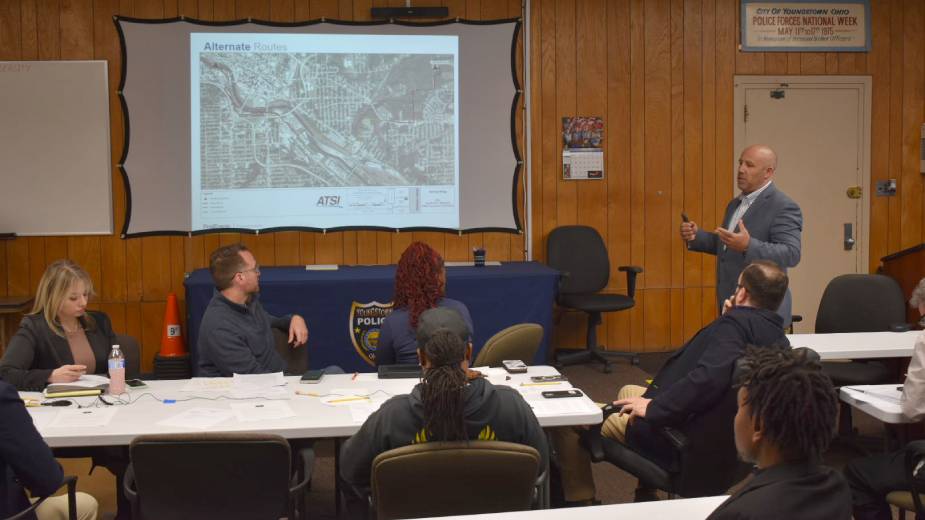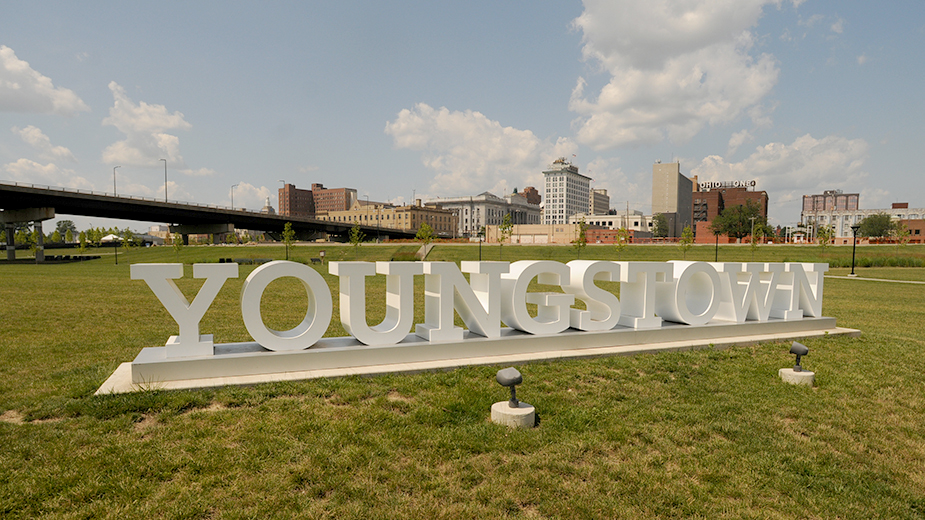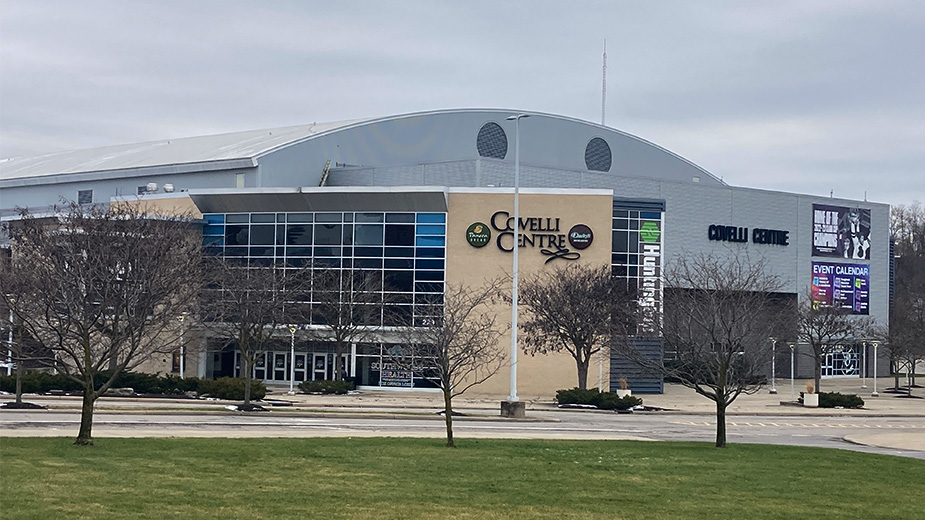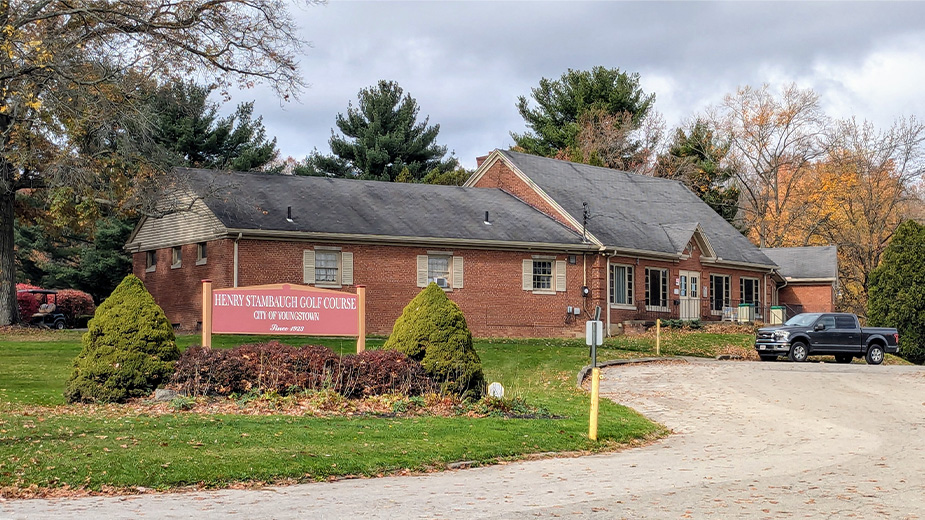FirstEnergy Outlines Transmission Line Alternatives
YOUNGSTOWN, Ohio – Members of City Council say two alternative plans presented by FirstEnergy Corp. to connect the utility’s Lincoln Park and Riverbend substations using a 138-kilovolt transmission line are an improvement over its last proposal, though one councilman admitted one of the proposals strikes particularly close to home.
FirstEnergy representatives appeared before City Council’s public utilities committee Tuesday afternoon, roughly 11 months after the Ohio Power Siting Board denied the company’s application for a certificate that would have permitted a FirstEnergy subsidiary to construct the 6-mile transmission line.
The board’s decision to deny the Certificate of Environmental Compatibility and Public Need came amid a firestorm of public opposition over the plan to erect the transmission line and towers along the north bank of the Mahoning River. Opponents of the project pointed to the $60 million already invested in riverfront assets such as the Covelli Centre, Youngstown Foundation Amphitheatre and Wean Park, as well as plans to capitalize on the Mahoning River once a dam removal project is completed.
Since the siting board’s decision, FirstEnergy representatives have worked with city and community leaders to come up with the alternative routes presented Tuesday, Troy Rhoades, external affairs representative for the utility, said.
The two alternative routes proposed both are on the south side of the river and utilize more existing infrastructure, such as poles, than the earlier proposals, according to the FirstEnergy representatives. There currently is no connection between the two substations, so if the transmission source goes out at either station, there is no power to service its customers.
“This will add a layer of redundancy,” said Scott Humphrys, who works in transmission siting at FirstEnergy. In addition to alleviating “prolonged outages,” such as those experienced following recent storms, the connection will add capacity for “future load growth and economic development,” he said.
“It’s solely for Youngstown and the areas that are supplied by the Lincoln Park and riverbend substations,” he added in response to concerns raised by Councilman Julius Oliver, 1st Ward, that the connection might be intended to allow power to pass through Youngstown to serve an area outside the city.
“We looked at many possibilities for river crossings. While keeping those in mind, we weren’t able to propose as many as we would want due to certain limitations,” Humphrys said. Also, while a straight line is usually the easiest solution, that isn’t always the case in dense population areas – plus the complication of the “unique situation” with the river and development concerns.
One of the proposals usws West Woodland Avenue, where Oliver pointed out he made a “half-million-dollar investment,” and he anticipates others will follow. He also expressed concern for elderly residents who live on the street.
“When I look out my window now, you see trees and downtown. It’s so serene,” he said. “I don’t have to worry about my kids getting cancer from power lines.”
Humphrys assured him that the view would be unchanged by the new transmission line and that the infrastructure would not impede neighborhood redevelopment. Other than towers used to bring the lines over the Market Street bridge, the plan would largely use traditional poles.
As far as concerns about electromagnetic fields generated by the lines, those emissions largely dissipate before reaching ground level. That is why burying the lines, as is often suggested, won’t work.
“You’ve taken away that ability to dissipate,” Humphrys said. Instead of 30 feet below the conductor to the nearest ground point, “you’re right on top of it. You have that lack of dissipation.”
Another route utilizes Wilson Avenue and Oak Street near the old Sacred heart Church.
“They have made some strategic changes, and I think they are being mindful,” Councilwoman Samantha Turner, 3rd Ward, said. “It’s time for us to work with them as they’re working with us.”
Oliver said his concern remains health issues, not just for him and his family but the street’s other residents and people throughout the 1st and 2nd wards.
“I understand it’s something that has to happen. They did come back with a better route,” he said.
FirstEnergy plans to host a public information meeting downtown in the next two months to get input on the proposals from local stakeholders, Humphrys said. The company will consider that input and any other possibilities that come out of that meeting, then proceed to file an application for whatever proposal it chooses with the state siting board, kicking off an approval process he expects to take about a year.
FirstEnergy also has developed a “virtual open house” that will be activated soon for people to learn about the project and provide input.
Should the project be approved, he anticipated construction would start during the third quarter of 2025, and the transmission line would be in service by the end of 2026.
Pictured at top: Scott Humphrys, who works in transmission siting at FirstEnergy, speaks before Youngstown City Council’s public utilities committee Tuesday.
Copyright 2024 The Business Journal, Youngstown, Ohio.



